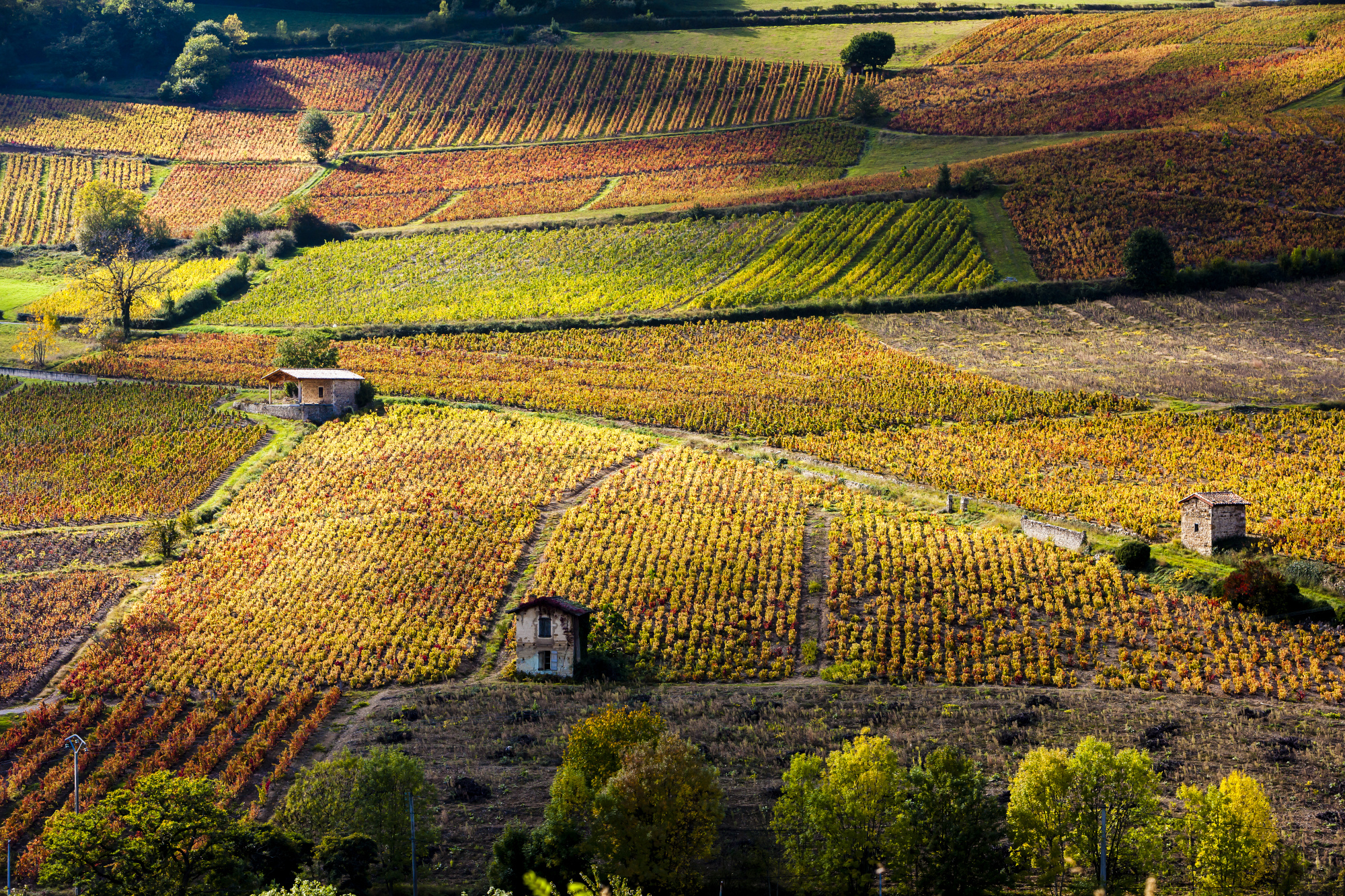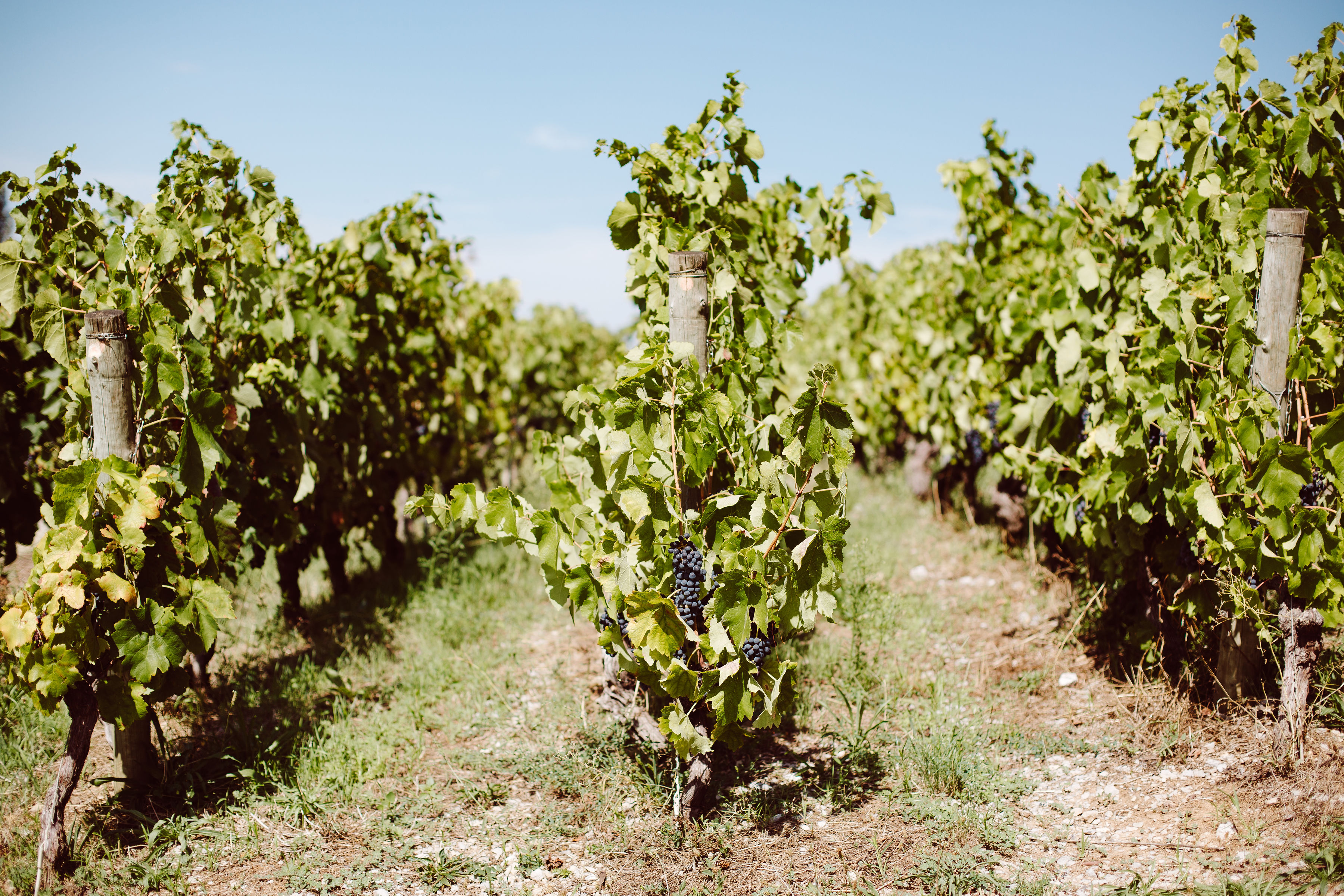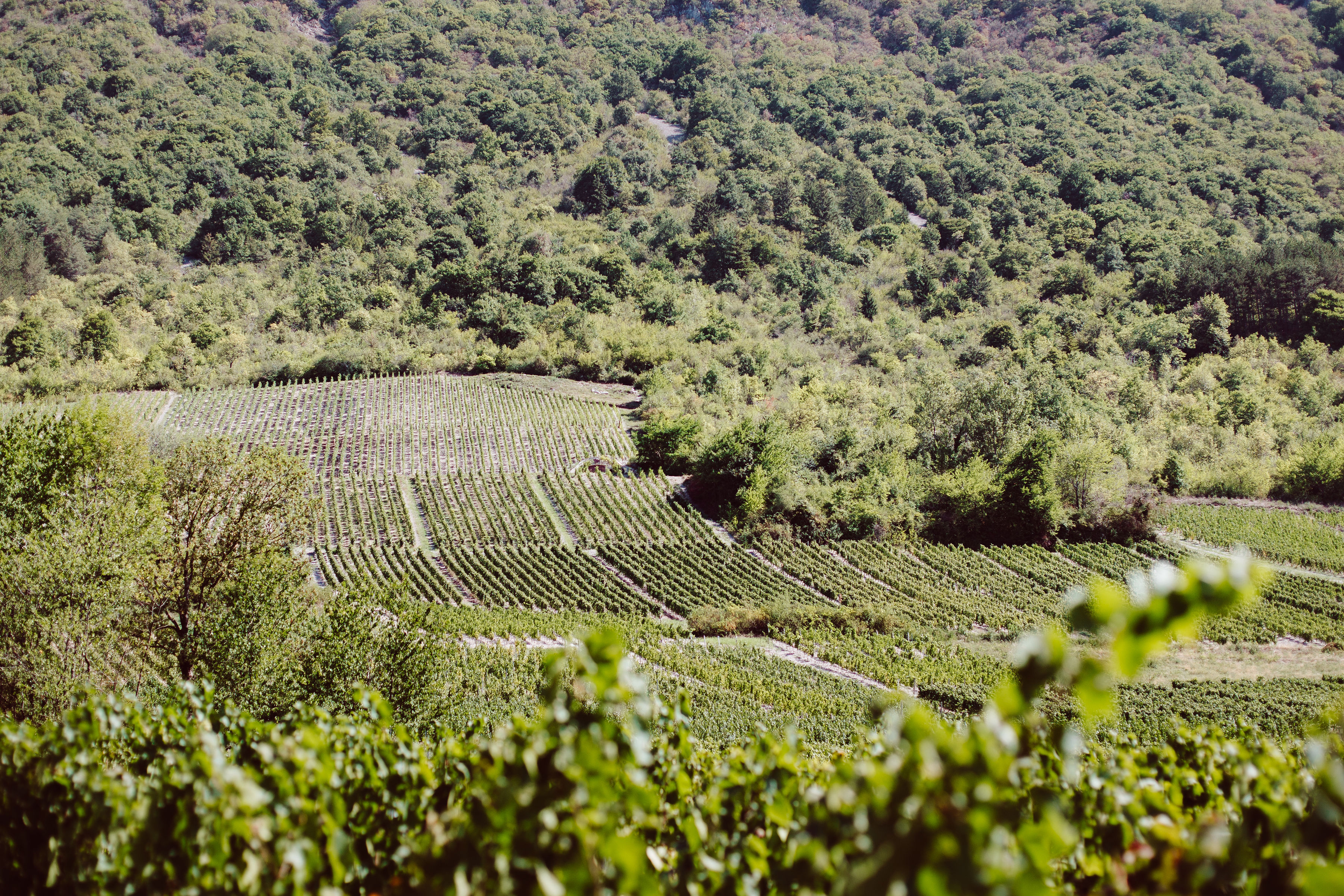
Beaujolais
Beaujolais vineyards: vin primeur, AOC and local wines
Every year, on the thirdThursday in November, Beaujolais Nouveau makes the headlines around the world and is served on every table. Even if this new wine has played an important role in the popularity of the vineyard, it should not eclipse the rest of the Beaujolais production. If this one was for a time shunned, it is today in full revival. The work of several winegrowers, in particular through the Morgon, Moulin à Vin and Fleurie crus, are fully involved in restoring the image of the vineyard. (Re)discover the appellations and crus of this wine region located between the south of Mâcon and the north of Lyon. You will be seduced not only by the diversity of its wines, but also by their often exceptional quality-price ratio.
General presentation of the Beaujolais
The Beaujolais vineyard is located on the right bank of the Saône, straddling the departments of Saône-et-Loire and Rhône; it stretches for about fifty kilometres from the south of Mâcon to the north of Lyon. The vineyards cover about 17,300 hectares spread over the slopes of the Beaujolais mountains, a name inherited from the lords of Beaujeu, who ruled the region until the beginning of the 15th century. This territory, which borders on Burgundy and the Côtes-du-Rhône, is mainly devoted to the production of red wines based on a flagship grape variety: Gamay. Beaujolais also produces a few white wines, mainly from Chardonnay. Other grape varieties are authorised, such as aligoté, pinot gris or melon.
The appellations
Beaujolais has 12 appellations: 2 regional appellations and 10 communal or local appellations.
AOC Beaujolais
This is the largest appellation of the vineyard; it is to it that we owe the majority of the famous Beaujolais Nouveau. It is spread over almost the entire Beaujolais, with a greater presence south of Villefranche-sur-Saône.
AOC Beaujolais-Villages
This AOC is produced in 38 communes in the Rhône and, to a lesser extent, the Saône-et-Loire. From Mâcon to Villefranche-sur-Saône, they are located in the central part of the vineyard as well as at its northern limits. The AOC Beaujolais-Village represents 25% of the local production. It is partly dedicated to Beaujolais Nouveau.
Beaujolais Crus
The 10 AOC Beaujolais crus are concentrated in the north of the vineyard:
- Brouilly: at the foot of Mount Brouilly, this appellation is the largest and most southern of the Beaujolais crus.
- Chénas: with its 266 hectares, it is the smallest cru of the Beaujolais.
- Chiroubles: typical of the region, the AOC Chiroubles is perched at an altitude of over 400 metres.
- Côte-de-Brouilly: this AOC is enclosed in the Brouilly appellation. It is produced on the slopes of the mount Brouilly.
- Fleurie: this appellation is produced in the commune of Fleurie. It gives wines that are often described as "feminine".
- Juliénas: in the north of the vineyard, overflowing on the Saône-et-Loire, it is one of the oldest wine territories of the region.
- Morgon: in the heart of the Beaujolais crus, this AOC is produced entirely in the commune of Villié-Morgon with some 1,100 hectares.
- Moulin-à-Vent: this AOC has a great reputation. It is produced on a hill in Romanèche-Thorins.
- Régnié: it is the most recent AOC of the Beaujolais crus. It is produced on the commune of Régnié-Durette.
- Saint-Amour: in the extreme north of the vineyard, this AOC is produced on the commune of Saint-Amour-Bellevue.
Appellations

Chénas AOP
Fleurie PDO
Côte-de-Brouilly PDO
Saint-Amour PDO
Moulin-à-Vent PDO
Beaujolais Villages AOP
Chiroubles PDO
Beaujolais AOP
Morgon PDO
Brouilly PDO
Le vignoble
